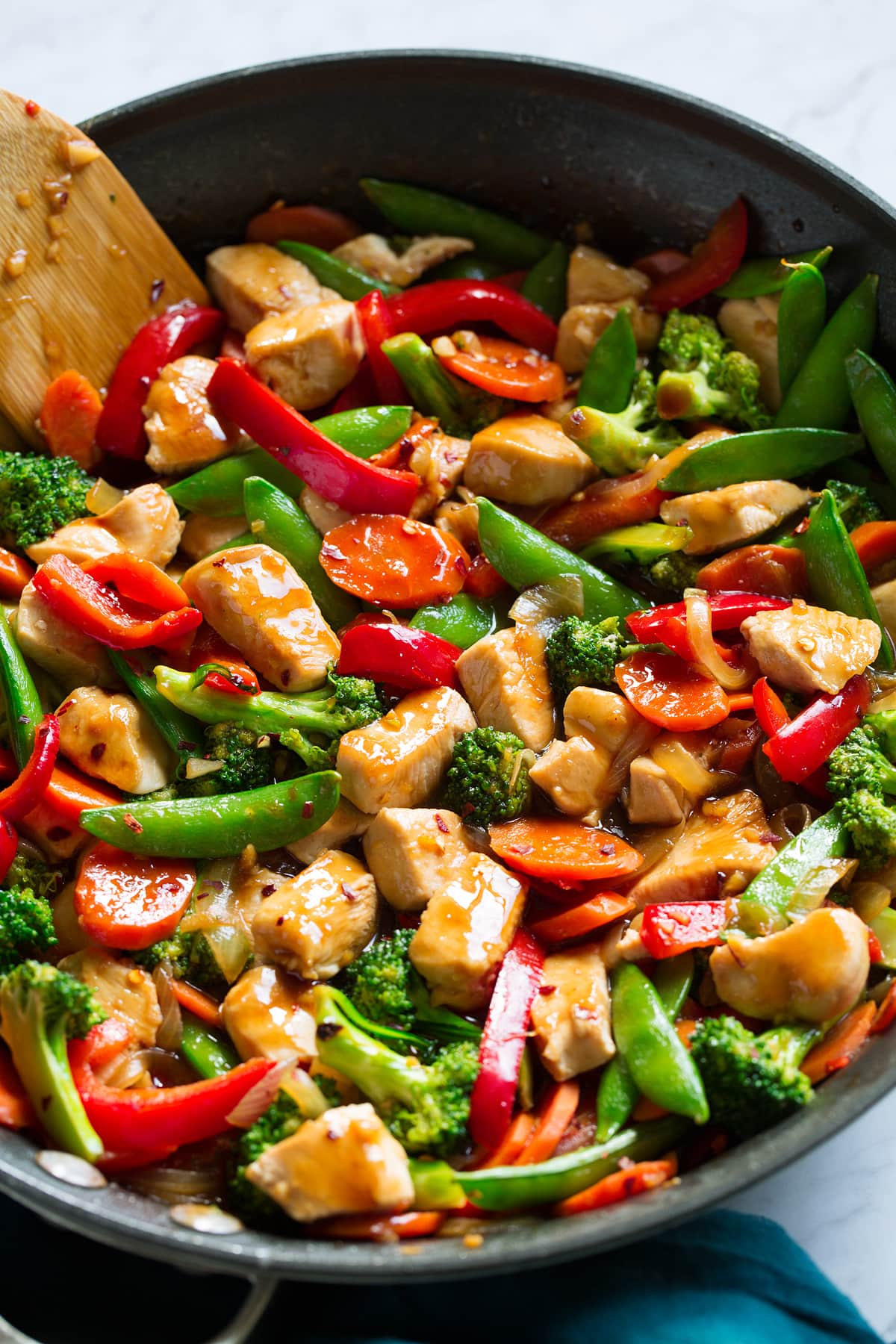Zesty Chicken Stir-Fry with Fresh Vegetables

Stir-frying can be a great option for those with busy schedules, yet it never has to feel like a routine fallback. By balancing bright seasonings, crisp vegetables, and tender strips of chicken, a well-structured stir-fry can lend both energy and flavor to weeknight dinners. The beauty lies in its adaptability: from switching up the vegetables to adjusting the spice level, the recipe welcomes creative touches that reflect personal taste and whatever ingredients you have on hand.
A key starting point often involves marinating the chicken. Briefly soaking bite-size pieces in a simple mixture of soy sauce, minced garlic, and a dash of ginger can build a foundational depth without adding to the cooking time. For those partial to extra heat, a small pinch of red chili flakes or even a teaspoon of hot chili paste can layer in a mild burn. Though marinating for just 15 minutes can suffice, some people prefer letting it rest a bit longer in the refrigerator, so the flavors have more time to bond with the chicken.
Selecting vegetables usually hinges on color, texture, and availability. Sliced bell peppers give sweetness and crunch, while broccoli florets bring a hearty bite. Carrots, thinly cut into matchsticks, balance out any spice with a gentle sweetness that surfaces when cooked quickly at high heat. Meanwhile, onions or scallions deliver that signature aromatic note. Regardless of which vegetables you choose, aiming for uniform shapes promotes even cooking, vital in a stir-fry setting where high temperatures demand brisk movement.
A wide, heavy-bottomed skillet or wok proves handy. Heated thoroughly before the oil goes in, it ensures immediate searing instead of stewing the chicken in its own juices. Once the oil begins to shimmer, the marinated chicken can enter, spaced out so each piece contacts the pan directly. Stir-frying at this stage should remain lively—tossing or flipping the chicken so it develops a light browning without scorching. As soon as it’s cooked through, removing the chicken temporarily lets you focus on the vegetables.
Swiftly upping the heat again, the vegetables follow. A splash of oil, if needed, keeps them from sticking. Here, the goal is to harness the crunch while still allowing some caramelization. Carrots and bell peppers naturally become sweeter under intense heat, while broccoli stands up well to the pan’s dryness. Stirring regularly but not incessantly allows color to develop. If a sauce is planned—maybe a combination of soy sauce, cornstarch, and a hint of honey—drizzling it once the veggies are nearly done helps lock in a glossy finish.
Reuniting the chicken with the vegetables near the end completes the puzzle. A few more seconds of tossing, coupled with any residual marinade or sauce, melds the flavors. Some stir-fry fans like a final squeeze of lime or lemon juice, introducing a bright tang that counters the savory core. Others might stir in a quick swirl of sesame oil for a subtle toasted note. Throughout this phase, it’s essential to avoid overcooking, as the dish can lose its crisp edges if left on the heat too long.
Serving can be straightforward or playful. Many pair the stir-fry with white or brown rice, which provides a neutral canvas for soaking up the sauce. Noodles—like lo mein or even thin rice noodles—work equally well if boiled in advance and tossed in. The final plates typically show off a riot of color: strips of golden-brown chicken nestled among vibrant vegetables, all glistening in a gentle sauce. A garnish of chopped green onions or toasted sesame seeds can signal a finishing touch, implying care was taken to balance flavors and aesthetics.
For those anticipating leftovers, a simple reheat can carry the meal into lunch the next day. Rather than microwaving into a soft, steamy consistency, it might be better to re-warm the stir-fry in a pan briefly, restoring some of its original crispness. If the dish appears dry, a small trickle of water or stock prevents over-thickening. In that sense, the meal remains versatile, responding well to second-day demands without losing its core appeal.
Part of the draw of stir-frying lies in its adaptability. By rotating vegetables—cabbage strips, zucchini slices, or even snow peas—and altering spice levels, each iteration can taste fresh and exciting. The consistent theme, however, is an energetic cooking style that unlocks the natural sweetness of meats and produce, bound by just enough sauce to unify flavors. It’s a technique that marries speed with substance, so dinner can be both quick and satisfying, validating why stir-fry often becomes a fixture in weekly routines across many different kitchens.
